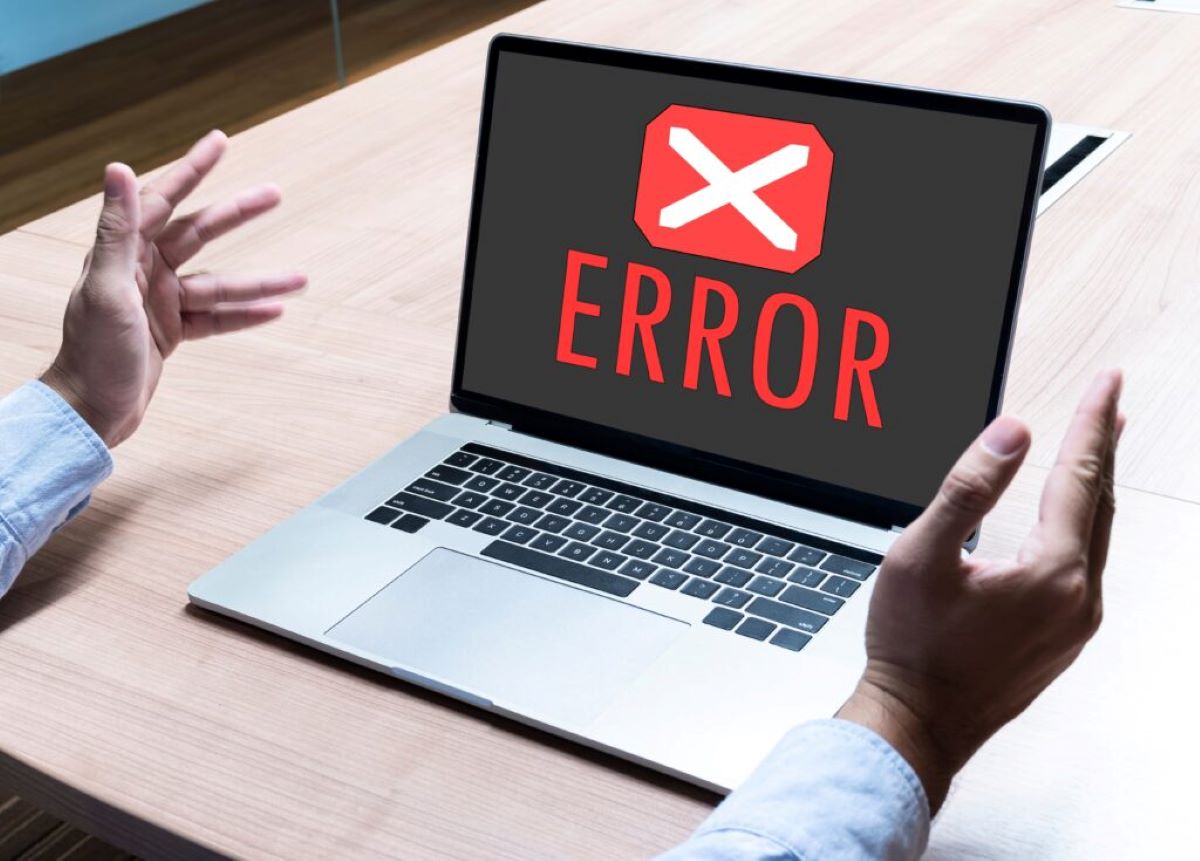

Finance
What Does Code 150 Mean On An IRS Transcript?
Published: October 31, 2023
Understanding the significance of code 150 on an IRS transcript and its implications for your finances. Uncover the meaning and take appropriate actions.
(Many of the links in this article redirect to a specific reviewed product. Your purchase of these products through affiliate links helps to generate commission for LiveWell, at no extra cost. Learn more)
Table of Contents
Introduction
When it comes to navigating the complex world of personal finance, understanding the intricacies of the Internal Revenue Service (IRS) can be a daunting task. One particular aspect that can leave taxpayers puzzled is deciphering their IRS transcript. These transcripts provide a detailed summary of a taxpayer’s tax account, including information about income, deductions, payments, and any other activities related to their tax obligations.
Within these transcripts, you may come across various transaction codes that provide specific details about different aspects of your tax account. One such code that often raises questions is Code 150. What does Code 150 mean on an IRS transcript? Does it indicate a problem or an issue that needs attention? In this article, we will explore the meaning of Code 150 and shed light on why it may appear on your IRS transcript.
Understanding IRS transaction codes and their implications is crucial for all taxpayers. It can help you interpret your tax transcript accurately and take the necessary actions to resolve any potential issues. So, let’s dive into the world of IRS codes and unravel the mystery behind Code 150.
Understanding an IRS Transcript
An IRS transcript is a document that provides a detailed record of a taxpayer’s tax account, including information about income, deductions, credits, penalties, and any other activities related to their tax return. It serves as an official summary of all the financial transactions and interactions between the taxpayer and the IRS.
IRS transcripts are commonly used for various purposes, such as resolving tax disputes, verifying income for loan applications, or obtaining information to prepare past due tax returns. They contain a wealth of information that can help taxpayers understand the status of their tax account and address any potential issues.
There are different types of IRS transcripts, including the most commonly requested ones:
- Tax Return Transcript: This transcript shows most line items from your original tax return, such as your filing status, income, deductions, and credits.
- Account Transcript: This transcript provides a summary of your tax account, including payments, penalties, interest, and adjustments made by the IRS.
- Wage and Income Transcript: This transcript includes information about income reported to the IRS, such as W-2s, 1099s, and other income documents.
Understanding the information presented in an IRS transcript is crucial for accurate tax reporting and compliance. It allows taxpayers to identify any discrepancies, verify the accuracy of reported income, and ensure that all tax obligations are met.
IRS Transaction Codes
IRS transaction codes are a series of three-digit codes used to indicate various actions and events that occur within a taxpayer’s tax account. These codes provide essential information about the specific transactions and activities that have taken place related to the taxpayer’s tax return.
Each transaction code represents a unique event or action, such as a payment, refund, adjustment, or assessment. These codes are meant to provide a standardized way for the IRS to categorize and track different activities within a taxpayer’s account.
Transaction codes are typically found on IRS transcripts and can be instrumental in understanding the history and current status of a tax account. By deciphering these codes, taxpayers can gather important information about their tax obligations and any actions taken by the IRS.
It’s important to note that not all transaction codes are indicative of a problem or issue. While some codes may signify adjustments or assessments, others may simply be routine actions taken by the IRS to process a return or issue a refund.
Understanding the meaning of each transaction code can be a valuable tool in navigating the IRS system and addressing any potential concerns that may arise.
Code 150 on an IRS Transcript
Code 150 is one of the many transaction codes that you may encounter on an IRS transcript. This particular code is significant as it reflects an important event or action related to your tax account.
Code 150 specifically refers to a tax return filed by a taxpayer. It indicates that the IRS has received and processed your tax return for a specific tax year. When you see Code 150 on your IRS transcript, it confirms that your return has been accepted and recorded in the IRS system.
This code represents a milestone in the tax filing process, showing that your tax return has successfully made its way through the initial stages of processing. It signifies that the return has been received, checked for accuracy, and officially recognized by the IRS.
It’s important to note that Code 150 does not provide any information regarding the outcome of your return. It simply indicates that the IRS has acknowledged your filing and has recorded it in their system. Whether your return resulted in a refund, a balance due, or no change in your tax liability, this information will not be indicated by Code 150 alone.
If you have concerns or questions about the status or outcome of your return, it’s advisable to review other sections of your IRS transcript or contact the IRS directly for more information.
Meaning of Code 150
Code 150 on an IRS transcript signifies the acknowledgement and recording of a taxpayer’s filed tax return by the IRS. It indicates that the return has been received, processed, and officially recognized by the IRS system. While Code 150 is an important transaction code, it does not provide any specific details about the outcome or status of the return. It simply serves as a confirmation that the tax return has been successfully received and documented.
Code 150 is significant because it marks a crucial step in the tax filing process. It assures taxpayers that their tax return has reached the IRS and has undergone the initial stages of processing. It means that the return has been checked for accuracy and completeness, and the IRS has officially acknowledged its receipt.
It’s important to remember that Code 150 does not indicate whether the taxpayer is due a refund or has a balance due. The amount of any refund or tax owed will be determined and communicated through other sections or codes on the IRS transcript.
If you see Code 150 on your IRS transcript, it is a positive sign that your tax return has been successfully filed and received by the IRS. However, it is essential to review the entire transcript to understand the complete status of your tax account and address any potential issues or concerns.
Common Reasons for Code 150
There are several common reasons why Code 150 may appear on an IRS transcript. Understanding these reasons can provide insight into why the code is present and what it means for your tax situation. Here are some of the most common scenarios:
- Filed Tax Return: Code 150 typically appears when you have filed your tax return for a specific tax year. It serves as confirmation that the IRS has received and processed your return.
- Accepted Tax Return: Code 150 can also indicate that your tax return has been accepted by the IRS. This means that the return met the necessary requirements and was successfully processed without any significant issues.
- Recorded Tax Information: Code 150 shows that the information from your tax return has been recorded by the IRS. It implies that your reported income, deductions, and credits have been documented in the IRS system.
- Submission Confirmation: Code 150 can provide reassurance that your return has been received and acknowledged by the IRS. It confirms that your tax filing obligation has been fulfilled for that particular tax year.
It’s important to note that Code 150 does not provide specific details about any amounts owed or refunds due. If you have concerns about your tax liability or refund status, it’s advisable to review other sections of your IRS transcript or contact the IRS directly for more information.
Overall, when you see Code 150 on your IRS transcript, it generally indicates that your tax return has been successfully filed, received, and processed by the IRS. It signifies an important milestone in the tax filing process, providing assurance that your tax obligations for that tax year have been fulfilled.
Potential Actions Required for Code 150
When Code 150 appears on your IRS transcript, it typically does not require any immediate or specific actions on your part. The presence of Code 150 signifies that your tax return has been successfully filed, received, and processed by the IRS. However, there are some potential actions you may need to consider based on the information provided on your transcript.
1. Review Your Transcript: While Code 150 itself does not indicate any issues or problems, it’s important to carefully review your entire IRS transcript for any other codes or sections that may require attention. Look for any additional codes that may signify adjustments, assessments, or potential errors that need to be addressed.
2. Check for Refund Status: If you are expecting a refund, check for any refund-related codes or sections on your transcript. This information can help you determine the status of your refund and whether any additional actions are needed.
3. Double-Check Accuracy: Take the opportunity to review the information provided on your transcript for accuracy. Ensure that your reported income, deductions, and credits align with your records and that there are no discrepancies or errors. If you identify any mistakes, you may need to consider filing an amended return to correct them.
4. Address Outstanding Issues: If you come across any other codes or sections on your transcript that indicate unresolved issues, such as a balance due, underreported income, or discrepancies, it’s crucial to address these matters promptly. Consider contacting the IRS or consulting with a tax professional to understand the specific actions required to resolve the issues.
5. Keep Copies of Your Transcript: It’s wise to keep a copy of your IRS transcript, whether in digital or physical form, for future reference. It serves as documentation of your tax filing and can be valuable in case of any future inquiries or disputes regarding your tax account.
Overall, while Code 150 does not demand immediate action, it is important to review your IRS transcript comprehensively, address any outstanding issues, and ensure the accuracy of the reported information. Taking these steps can help ensure that your tax obligations are met and that your tax account remains in good standing with the IRS.
Resolving Code 150 Issues
In most cases, Code 150 on an IRS transcript does not indicate any specific issues or problems that require immediate resolution. However, if you come across other codes or sections on your transcript that indicate potential errors, discrepancies, or outstanding matters, it is important to take appropriate steps to address them. Here are some strategies for resolving Code 150 issues:
1. Review the Complete Transcript: Take the time to thoroughly examine your entire IRS transcript, paying close attention to any other codes or sections that may require attention. Look for any codes related to adjustments, penalties, or other issues that may need resolution.
2. Understand the Implications: For codes other than Code 150, research their meanings and implications. This can help you understand the specific issue at hand and the actions needed to resolve it.
3. Gather Documentation: Collect all relevant documentation and records related to your tax return. This includes income statements, expense receipts, and other supporting documents. Having this information readily available will be helpful when addressing any discrepancies or disputes.
4. Contact the IRS: If you discover significant errors or discrepancies on your transcript or if you receive a notice from the IRS regarding your tax account, it is advisable to reach out to the IRS directly. They can provide guidance on the specific steps you need to take to resolve the issue. Be prepared to provide detailed information and documentation to support your case.
5. Seek Professional Assistance: If you find the process overwhelming or if you need expert advice, consider consulting with a tax professional or hiring a certified tax preparer. They can navigate through the complexities of the tax system and help you address any issues or disputes with the IRS.
6. File an Amended Return, if necessary: If you identify errors or omissions on your original tax return, you may need to file an amended return to correct those mistakes. Consult with a tax professional to ensure that the amended return is completed accurately and according to IRS guidelines.
7. Keep Records and Communicate: Throughout the process of resolving Code 150 issues, maintain thorough records of all communications, documents, and actions taken. Keep copies of all correspondence with the IRS and any supporting documentation. Clear and open communication with the IRS can help expedite the resolution process.
Resolving Code 150 issues and other discrepancies on your IRS transcript may require time, effort, and possibly professional assistance. It is important to address these matters promptly and accurately to ensure that your tax account is reconciled correctly and to avoid any potential penalties or interest charges. Stay proactive, keep records, and seek guidance when needed to achieve a satisfactory resolution.
Conclusion
Navigating the complexities of the Internal Revenue Service (IRS) can be overwhelming for taxpayers. Understanding the meaning and implications of various transaction codes, such as Code 150, is essential for interpreting your IRS transcript accurately. While Code 150 indicates the successful filing and processing of your tax return, it does not provide specific details about refunds, balances due, or other potential issues.
When reviewing your IRS transcript, it is crucial to consider the complete picture. Look for other codes or sections that may require attention, and address any outstanding matters promptly. Keep in mind that resolving Code 150 issues may involve reviewing and understanding additional codes related to adjustments, assessments, or penalties.
If you encounter significant errors or discrepancies, or if you receive a notice from the IRS, it is essential to reach out and communicate with the IRS directly. They can provide guidance on the specific actions you need to take to resolve any issues or disputes. Seeking professional assistance from a tax professional or certified tax preparer can also be beneficial in navigating the complex tax system and ensuring compliance with IRS regulations.
Remember to keep thorough records of all communications, documentation, and actions taken. This will help you stay organized throughout the resolution process and provide supporting evidence if needed.
While Code 150 itself may not necessitate immediate action, it should serve as a reminder to review your tax obligations, ensure the accuracy of your reported information, and address any outstanding matters promptly. By staying proactive and taking the necessary steps to resolve any issues, you can maintain a favorable tax standing with the IRS and achieve peace of mind regarding your tax obligations.














